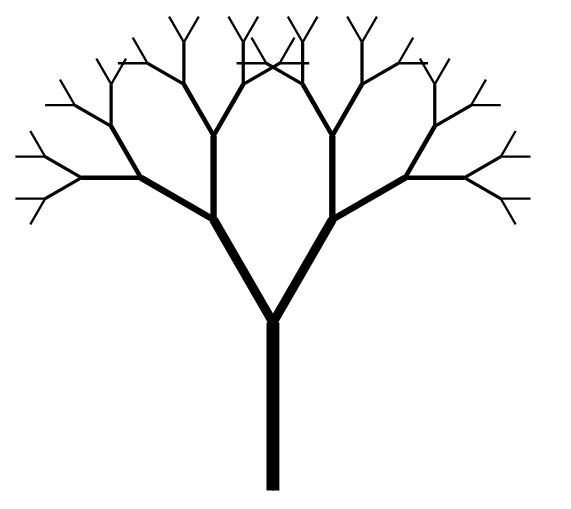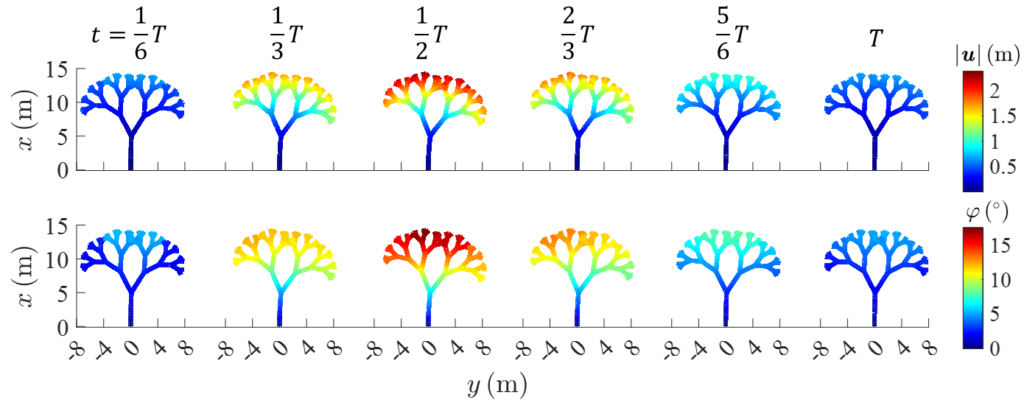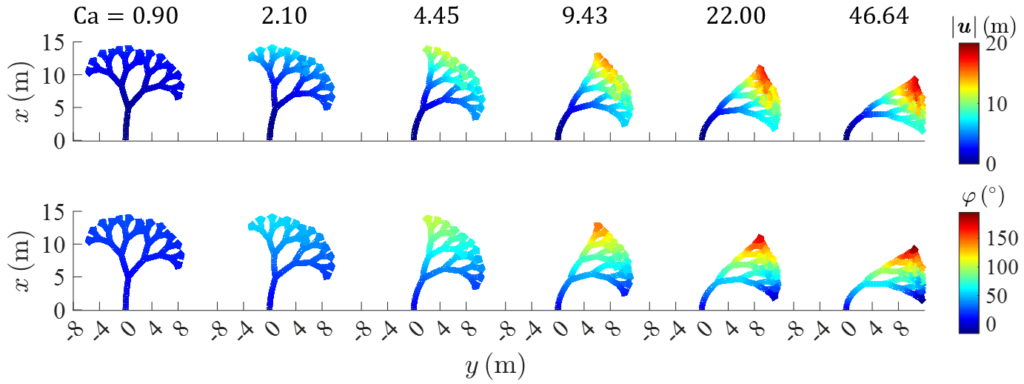

Understanding the dynamic response of trees to a strong wind is crucial to alleviating the damages and losses of tree forests caused by windstorms. Previous studies have elucidated small deformations of a broad range of tree species, yet mathematical models that can accurately pinpoint the location and severity of wind-induced damages are still lacking. To bridge this gap, the present work puts forward the first geometrically accurate, physics-based model to capture the large deformation of trees induced by a strong wind. The proposed model incorporates a branched tree architecture to represent the topology of a realistic tree. The large, dynamic deformation of the trunk and branches of the tree is described by a system of nonlinear partial differential equations derived from structural theories rooted in classical mechanics. The aerodynamic loading is quantified based on the instantaneous relative velocity between the wind and the tree. The proposed model could accurately simulate the effects of aerodynamic damping by capturing the nonlinear interplays between the wind and the tree, in contrast to previous models that relied on empirical assumptions of the damping coefficients. The model further reveals a reduction in the drag force due to wind-induced shape reconfiguration, which is enhanced exponentially as a function of the wind speed. Work is underway to extend the current model to encapsulate multiple trees in a forest toward the discovery of novel forest management strategies that minimize wind-induced economic and environmental losses.


Publications
- Zhang, P., 2024: “Large deformation of trees in a strong wind”, Applied Mathematical Modelling, 131, 381-402.